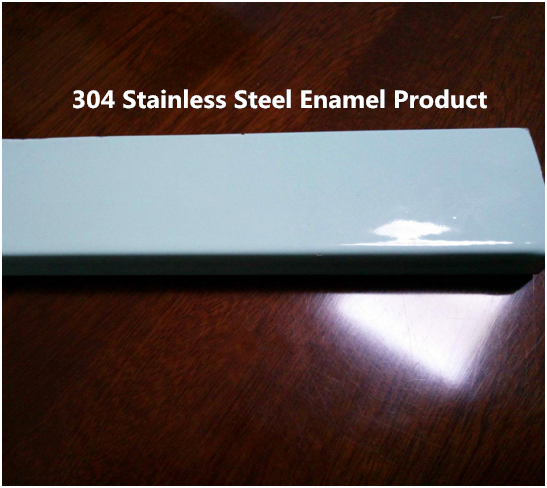How to make stainless steel enamel?
Stainless steel has many excellent characteristics and is widely used in cooking utensils, building decoration, household goods, and other occasions. However, under high-temperature conditions, the grain boundaries of stainless steel are susceptible to corrosion by hot corrosive gases, which shortens life. The stainless steel enamel developed in recent years has strong corrosion resistance and good energy-saving effects. This article Nolifrit combines the choice of stainless steel material and enamel frit to analyze how to make stainless steel enamel.

1.Selection and treatment of stainless steel
When selecting stainless steel, you should choose a stainless steel plate with high corrosion resistance, high mechanical strength, low impurity content, and no defects. We recommend using 304 stainless steel as the material. If it is a processed stainless steel body, the arc at the turn is as smooth as possible. If the radius of curvature is too small, it will cause excessive internal stress at the corners, which will increase the chance of a cold explosion of enamel. In order to make coating easier, the surface needs to be degreased and de-rusted. It is recommended to use the surface treatment method of pre-firing and sandblasting. A certain depth must be reached during the blasting to facilitate the adhesion of the enamel layer.
2. Selection of enamel frit
The coating of stainless steel enamel products can be done in two passes ( ground coat and cover coat), or only enamel cover coat. This should be selected according to actual needs. The two passes are used, because a special base glaze dedicated to stainless steel enamel is selected, which is stronger than the ordinary base glaze. The adhesion of the enamel layer will be better, which is suitable for stainless steel enamel products with certain strength requirements. For stainless steel enamel products that only care about the appearance, they can use only enamel cover coat. Choose titanium white frit, titanium lake blue frit, titanium fruit green frit to directly achieve the desired color and appearance effect.
3. Burning
After the frit and mill additives are ball-milled, the slip can be uniformly coated on the surface of the stainless steel body by spray lining or manual coating. If the surface area of the product is large, it is recommended to use a spray gun for spraying, so that the product surface will be more delicate and even. After coating and lining, the product is placed near a heat source such as an oven to be dried. After thoroughly drying the moisture, it can be sintered.
After enamel, the performance of stainless steel can be greatly improved. According to relevant data, enamel-coated stainless steel products are quite resistant to boiling water, alkali and thermal stability. The sample was immersed in a 5% sodium carbonate solution, and the liquid temperature was maintained at 80 ± 5 ° C for 20 minutes. Then the sample was removed and dried, and the porcelain surface did not lose its original gloss; The sample was placed in an oven and heated to 200 degrees. After being taken out, the sample was quenched with water, and the experiment was repeated three times without any cracking. Stainless steel enamel has good adhesion, smooth porcelain surface, and excellent corrosion resistance, which fully shows that stainless steel is suitable for more fields after being coated with enamel frit.
Related Searches:
Enamel coated stainless steel
Stainless steel enamel cookware
Enamel on stainless steel
Stainless steel enamel pots
Stainless steel enamel pans
Stainless steel enamel bowls
Enamel stainless steel utensils
Enamel stainless steel bakeware
Enamel stainless steel teapots
Stainless steel enamel dishes
Stainless steel enamel mugs
Stainless steel enamel plates
Enamel stainless steel kettles
Stainless steel enamel roasting pans
Stainless steel enamel skillets
Enamel stainless steel frying pans
Stainless steel enamel saucepans
Enamel coated steel durability
Enamel steel heat retention
Enamel stainless steel non-stick
Enamel steel corrosion resistance
Enamel stainless steel versatility
Enamel stainless steel heat conductivity
Stainless steel enamel weight
Enamel steel cookware benefits
Enamel steel kitchenware
Enamel steel cleaning ease
Stainless steel enamel surface
Enamel stainless steel colors
Enamel stainless steel safety
Stainless steel enamel durability
Enamel stainless steel aesthetics
Stainless steel enamel maintenance
Enamel stainless steel thermal efficiency
Enamel coated steel safety
Enamel steel cookware performance
Stainless steel enamel interior
Stainless steel enamel exterior
Enamel stainless steel oven safe
Enamel steel boiling capacity
Enamel stainless steel induction compatible
Enamel stainless steel grilling
Enamel stainless steel sustainability
Enamel stainless steel eco-friendly
Stainless steel enamel market trends